
Much of this review block centered around games and manipulatives. We began the review by meeting our old Gnome friends and reading their verses, which can be found in my math archives from Grade 1 here.

The vehicle of Sept has been the Chumash Indians of Southern California. I found an amazing book put out by the Santa Barbara Museum of Natural History called "The Chumash People: Materials for Teachers and Students" which had a lot of wonderful hands-on ideas, recipes, games, and information on making this a fun block. This book will definitely come back in our repertoire when we study them in more detail down the road. But it would be great for unschoolers and those who do unit studies - all wrapped up in one awesome little book!
So one of the games that the Chumash played was a dice game. They made their dice out of California Black Walnuts, but I had these big English ones, so we used them instead.

We soaked them overnight so they would be easier to separately cleanly.

DH did his manly duties and broke them apart so we had six halves.

Instead of asphaltum (or tar), we made our own fake solution using glue and black acrylic paint :D


The dice were decorated using pieces of abalone shell chips, but we used clam shell chips instead. Less shiny and pretty, but it's what we had on hand.





And we let them dry overnight. In the meantime, while they were drying, we played a series of games. In the "Kemi" book, Kemi, his cousin Tonla, and his father go with others to the ocean to trade with the Chumash from the Channel Islands. They lay out their mats and present their items for trade. When a trade is agreed, the items are exchanged.
So we set up shop and the girls each got a basket with some special things from nature and created their own back story with their village name, etc. They came to my mat to trade their goods for mine.
We did a series of exercises where they would give me a certain number of acorns for a certain number of my shells. We used this to practice all four processes: ie - you are giving me 5 acorns and I am giving you 3 shells. How many total do we have on the table. 8? Correct. If you took all eight items and divided them equally among your four children, how many would each of your children receive? 2? Yes!
We worked through various stories this way, practicing as we went along.
Some I would write on the board and then they copied work into their MLB's.
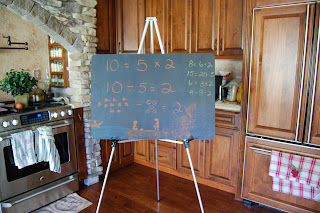


We also read another short Chumash book called, "Tohi", which gave a lot of details about the Chumash life weaved into the story about a sweet and obedient little boy who was eager to help his father make a soapstone bowl for his mother, a tomol (the Chumash canoe), shell money (which the Chumash were famous for - the word "Chumash" actually means makers of shell money) and who learned to trade for cooking supplies. It was a very nice and gentle book for little ones.
Pasquala is one we will be reading this week, about a California Indian girl, though she is Yokut.
The way the game is played is the first player rolls the walnut shell dice and counts how many land with the flat side up. That number is written down and the player rolls again. Again the number of walnuts with the flat side up is counted and written down and the player repeats it a third time. The three sums are tallied and if the number is even (and the player is even), they take a stick from their opponent. If the number is odd (and the player is even), they give a stick to their opponent.
Then it is player two's turn. The game continues this way until one player has no more sticks left.


It was a great way to practice addition facts and to cover even/odd numbers, which is done in Grade 2. We used our *dragon's tears* manipulatives to count and then to divide in two groups, if the girls weren't sure whether the number was odd or even. They also noticed the pattern whereby you just need to look at the number in the units column to determine whether the number is odd or even (ie: the number 23 - just look at the '3' to see that it is odd).
Finally the time came to play the Chumash dice game! We used larger sections of branches, instead of pencil sized sticks. But each girl got four sticks. They each picked even or odd (Charley was even, Elena was odd).
The way the game is played is the first player rolls the walnut shell dice and counts how many land with the flat side up. That number is written down and the player rolls again. Again the number of walnuts with the flat side up is counted and written down and the player repeats it a third time. The three sums are tallied and if the number is even (and the player is even), they take a stick from their opponent. If the number is odd (and the player is even), they give a stick to their opponent.
Then it is player two's turn. The game continues this way until one player has no more sticks left.


It was a great way to practice addition facts and to cover even/odd numbers, which is done in Grade 2. We used our *dragon's tears* manipulatives to count and then to divide in two groups, if the girls weren't sure whether the number was odd or even. They also noticed the pattern whereby you just need to look at the number in the units column to determine whether the number is odd or even (ie: the number 23 - just look at the '3' to see that it is odd).
We played the game until the girls started to grow weary of it.



We played more counting games with our beanbags (full of dog hair - yikes!) and put our walnut shells in our math basket to play again!

We have also been continuing on with our trickster tales at the end of math lessons from the book, "When the Animals Were People" by Kay Sanger.

The girls had decided to put on a casual play for Daddy from this story...

Both weeks were full of review of the gnomes, the four processes, and beginning word problems - always with the use of manipulatives centered around the Chumash tales (note the Rainbow Bridge in the pictures below). I didn't take a ton of pictures, as we were very busy this whole month, but most of our math review took place through games and copy work. The girls clearly grasp the concepts and I am very pleased with how Waldorf ingrains this subject into the child's understanding - and makes it really fun and not abstract and confusing. It's been a wonderful foundation!


We also finished up this block last Friday with a wonderful field trip to the Chumash Indian Museum in Thousand Oaks, CA which I had organized for our local homeschooling group. Pictures will follow - but it was a-m-a-z-i-n-g!

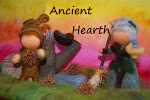










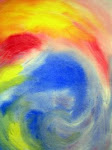



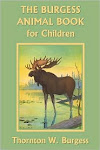





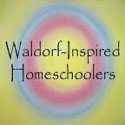
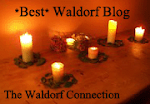



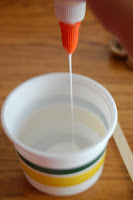

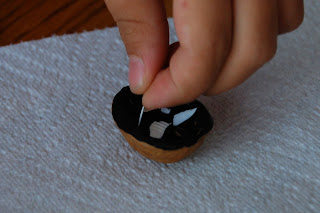









hi there. thanks for sharing your math experience this month. i love the waldorf approach to math, among so many other things. love your indian crafts..ive got a similar book full of games and dyeing craft ideas. lovely . xo
ReplyDeletewhat fabulous ideas and inspiration! I really need to make some "hands on" math tools for my daughter...she really struggles with math concepts, but I haven't really put enough time into developing a strong curriculum for her.
ReplyDeleteI'm so appreciative of a great grade two math post!
xo maureen
I just found your blog as I was looking for ideas for my nieces. I'm a homeschooling aunt! You have so much wonderful material! Thank you for posting so many wonderful ideas! Best wishes to your family! I'd love to be in those pictures with you, seated around your table!
ReplyDeleteOur beanbags get full of dog hair too. It was just funny to read, since I guess I fret over that a bit.
ReplyDeleteHa ha! Mama - from one furmomma to another :D
ReplyDeleteWhat fun!! And how interesting that the Chumash women used the dice for gambling.
ReplyDelete